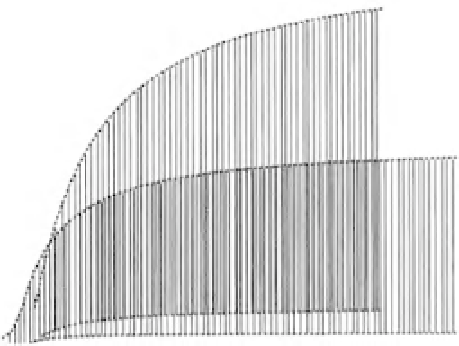Environmental Engineering Reference
In-Depth Information
40
100
30
Liriodendron
20
50
Acer rubrum
10
Acer rubrum
Liriodendron
0
0
(a) Classical analysis
80
Acer rubrum
70
60
50
Liriodendron
150
40
100
30
Acer rubrum
20
Liriodendron
50
10
0
0
0 0 0 0
Distance (m)
80
100
0
0.2 0.4 0.6
Posterior mean light estimate
0.8
(b) Hierarchical Bayes
Figure 12.3
Contrasting methods for inferring model parameters for aspects of colonization (seeds dispersed from parent trees) and
competition (growth rates at different light levels using (a) classical and (b) hierarchical Bayes analysis. Classical modeling (a) derives
a mean value for each trait and ignores the scatter in the data after this point. In (b) a spread of parameters is generated, and the
scatter in the data is thus incorporated into the model, encouraging co-existence between the two plant types (Reproduced from
Clark, J.S., Dietze, M., Chakrabotry, S.
et al
. (2007) Resolving the biodiversity paradox.
Ecology Letters
, 10, 647-62).
in the dry season, contradicting the common observation
that forests actually increase transpiration in the dry sea-
son, given the clear skies and higher radiation (Saleska
et al
., 2003). In response to the absence of appropriate
data with which to test models of future drier conditions,
two large-scale rainfall manipulation experiments were
established in the eastern Amazon, where warming and
drying are expected to be greatest (Nepstad
et al
., 2002;
Fisher
et al
., 2007). Rainfall shelters were constructed in
both experiments over one hectare of forest at 2 m height.





Search WWH ::

Custom Search